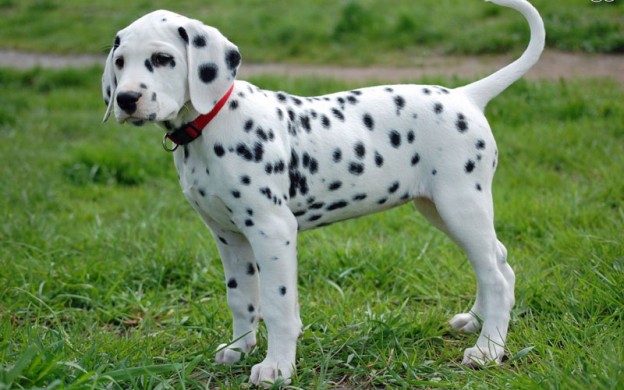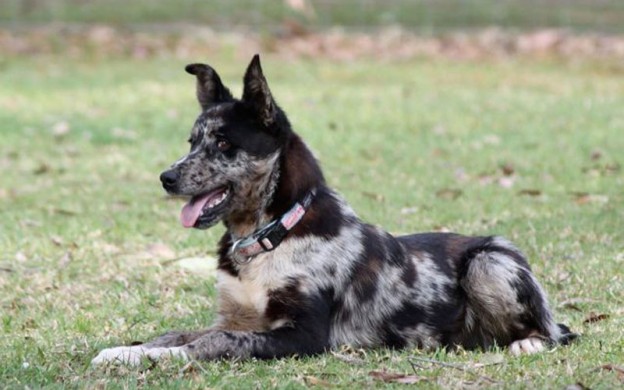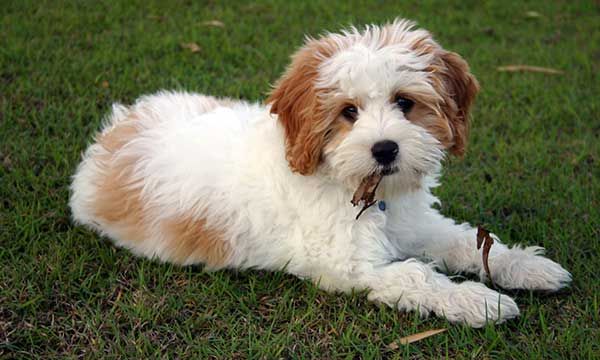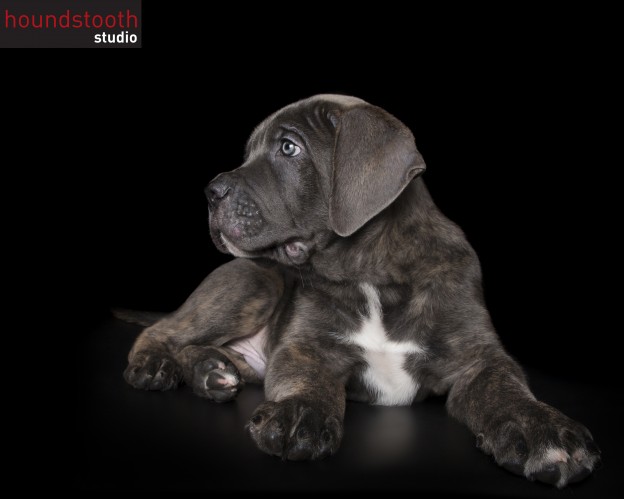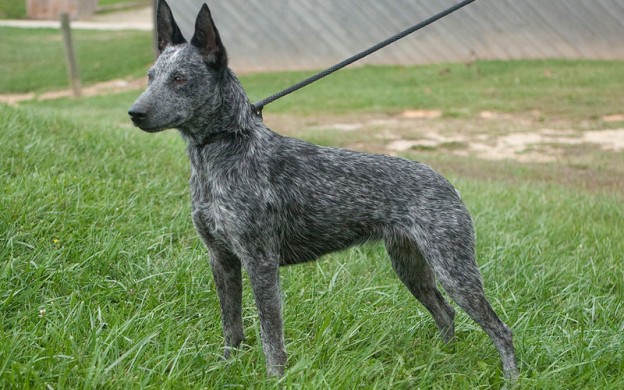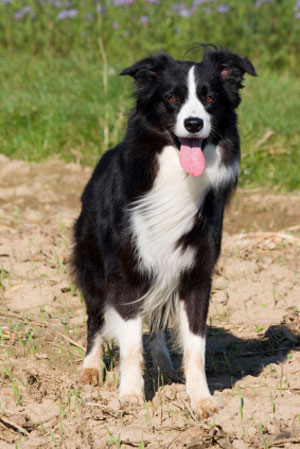
Find out some interesting Border Collie facts and the origin of this working dog breed.
Facts
Personality: Border Collies are highly intelligent, learn quickly and thrive on activity and attention. Their working genes make them hardy and energetic, and they are always up for a game or two, or three! They may be standoffish with strangers but are affectionate, eager to please and loyal companions to those they love.
Suitable for: Active adults, active families with older children, preferably school-aged kids, but families with younger children with other dog experience should also consider this breed. Only people who can give the Border Collie attention, exercise and mental stimulation should contemplate owning this breed, as bored Border Collies can be destructive in the suburban backyard with excessive barking, digging and escaping.
Favourite activities: This athletic breed can’t get enough of fetch and chase activities, excelling in frisbee, lure coursing, flyball and tracking activities. Some are known to occasionally herd small animals, humans and moving objects.
Watchdog qualities: The Border Collies alert nature is well suited to fulfilling watchdog duties. It will certainly let you know if there are people hanging around the peripheries of your property.
Hereditary diseases: There are several inherent diseases to look out for: hip and elbow dysplasia, Collie Eye Anomaly (CEA), Ceroid Leupofusconis (CL), Osteochondrosis Dissecans (OCD) and Trapped Neutrophil Syndrome (TNS).
The beloved Border Collie has been on our shores as a working dog since the mid-1800s. The breed is thought to have originated from the United Kingdom in the border counties of England and Scotland in the 18th and 19th Centuries.
These earlier dogs were keen herders, but difficult to control and often rough and tough with stock. Over the years, dogs with gentler traits were encouraged and bred this combined with its inherent herding instincts is what makes the modern Border Collie such a success.
We mostly think of Border Collie colours as black and white, but they actually come in a myriad of colour combinations. There are blue and white, chocolate and white, red and white, blue merle and black tri (black and white with copper). These colours are currently accepted by the Australian National Kennel Council (ANKC) but other colours are also available that are not deemed acceptable these are placed on the limit register by the breeder. If you are interested in acquiring a show dog, you should probably keep this in mind.
Colour awareness
Dogs Life speaks to Cath Hess, a breeder of Border Collies for more than 10 years, about colours. She would like to see more awareness about colours, as she points out that many breeders are charging excessive amounts of money for merles, chocolates and any colour currently deemed unacceptable.
Prospective owners should be aware that they shouldn’t be paying extra for other coloured Border Collies. A Border Collie is a Border Collie, no matter what colour it is, and its price should not be a reflection of its colour genetics, Hess says.
Both Hess and Suzanne Chandler, president of the Border Collie Club of Queensland, stress that only people who are willing to put the time and effort into these dogs should have them. The dumping rate of this breed is high, not because the breed is unmanageable or bad, but because owners who have them don’t give them enough mental and physical stimulation.
Some owners don’t do enough breed research or understand that these dogs are designed to work hard, and that they thrive on being useful and busy. Leave them alone all day with not a skerrick of stimulation and this will ultimately drive them to destructive behaviours, Hess and Chandler explain.
Re-homing Border Collies
If people have a dog they feel needs to be re-homed, both women suggest contacting the dogs breeder first to see if they can help, or to contact their local Border Collie Club, as they will most likely be able to suggest options and advice.
Most responsible breeders will happily help, as they want to know that their progeny are in safe and happy homes, Hess says.
It is important to train and socialise your puppy as soon as you get it, Chandler says. A responsible breeder will have already commenced socialisation and some basic training (such as learning that its not acceptable to bite, learning the word no, nail clipping, bathing, grooming the puppy before the age of eight weeks etc), she says.
Hess suggests new owners should consider a male pup instead of a female. Males are just as clean as the girls, however, they will do the same thing over and over again because they want to please so much. Girls on the other hand tend to do a behaviour a few times, then will throw some twists in because they know what is expected, she says.
Positive training, according to Hess, is the best method in general for any dog. She suggests clicker training, as she feels it is a good resource in getting the dog to learn new behaviours and maintain acquired ones.
Hereditary diseases
Prospective owners considering a Border Collie pup should also research carefully and speak to their breeders about hereditary diseases, as some of these diseases are very serious. Both parents should be hip and elbow scored for dysplasia. Ask the breeder for the pups parents scores and if the breeder can’t tell you, perhaps look for another breeder who can.
If you have already bought a pup and would like its hip score, Hess says hip and elbow scoring can be conducted by a vet after a dog has reached 12 months.
If the combined hip score of both parents is less than 20 (maximum being 212), this will reduce the chance of producing affected animals. They should also be DNA tested for Collie Eye Anomaly (CEA), Ceroid Leupofusconis (CL) and Trapped Neutrophil Syndrome (TNS).
Chandler explains that Collie Eye Anomaly (CEA) is a multi-genetic trait that is present at birth, does not change with age and has varying degrees of abnormality, affecting one eye or both. In a mild case, vision may be reduced, through to severe, with retinal detachment and total loss of vision. A DNA test is now available for this disease.
Ceroid Leupofusconis (CL) is a fatal brain wastage storage disease, says Chandler, where somewhere between 18 and 22 months of age, sufficient waste product has accumulated to begin compressing and destroying healthy brain cells.
At this time, the dogs display a number or all of the following changes: unusual apprehension, lack of concentration, abnormal gait, failing eyesight, rage and hyperactivity. The affected animals deteriorate rapidly and are usually euthanased, Chandler says. A DNA test for this disease can now be performed on puppies as young as six weeks.
Chandler informs Dogs Life that Osteochondrosis Dissecans (OCD) is a degenerative disease of the bone and cartilage of joints, characterised by partial or complete detachment of a fragment of bone. It is caused by a number of factors, including a genetic predisposition, as well as environmental conditions, for example, dietary over-supplementation.
Trapped Neutrophil Syndrome (TNS) affects puppies aged between six weeks and seven months. Symptoms include lameness, chronic diarrhoea, fevers and loss of appetite with persistent bone and gastrointestinal infections. Affected puppies are generally smaller than their littermates.
Delightful personality
Its not all doom and gloom with the state of health in this breed, but readers need to be aware of the potential problems if buying from unregistered and unscrupulous breeders.
The Border Collie is a delightful addition to the right household its energetic personality, eagerness and intelligence means you can be guaranteed a whole lot of fun, laughs and companionship. With your Border Collie, you can enjoy numerous shows and herding trials held around Australia.
Contact your state club for show dates and information, and see these wonderfully intelligent dogs at work.
Breed Care
Daily: Exercise and mental stimulation is essential long walks, if possible a run, and playing will be appreciated. Lots of water, a good-quality balanced diet and quick brush through the coat is necessary.
Weekly: A thorough groom at least once a week with a pin brush, a comb and spray bottle for about 15 minutes. For best results, dampen coat before brushing.
Monthly: Trim the hair under the feet pads and the outside foot hair, and keep on top of your heartworm, various worming treatments and flea and tick treatments. Bathing once a month should be sufficient in keeping the coat clean and shiny.
Regular: Heartworm and gastrointestinal worming; vaccinations.
Breed Contacts
For more information on the Border Collie or to find a breeder, contact your state canine council via the Australian National Kennel Council (ANKC) website at www.ankc.org.au
New Zealand Kennel Club: www.nzkc.org.nz/about.html
National Border Collie Council: www.nationalbordercolliecouncil.org
Border Collie Club of Queensland Inc.: www.bccq.org.au
Border Collie Club Of Victoria: www.bordercollie.org.au
New South Wales Border Collie Club: www.bccnsw.com
Border Collie Club Tasmania: www.nationalbordercolliecouncil.org




